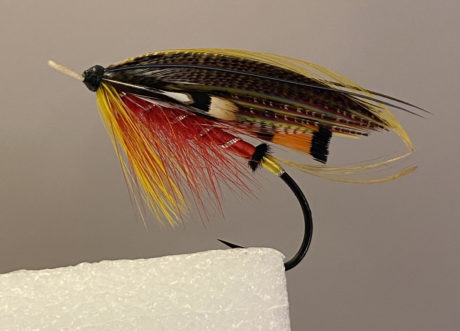
Part 2 of 3.
We at Deneki Outdoors are fans of Classic Fly Patterns. The sheer beauty of a fully dressed classic fly is a sight to look at. If These flies are not the easiest flies patterns to tie. They are complicated but even tiers with basic skills can achieve this fly.
It’s best to tackle this fly in stages. Sure you can tie this fly in one sitting, but that would be akin to trying a perfectly cooked Prime Rib Roast in one fell swoop. Take your time. Over the next three week’s we’ll release the steps to get this fly to fruition. Trust us, you’ll be better off.
A big Thank you to Stuart Foxall for the Instructions and Photos. You can find Stuart on Instagram @stuartfoxall.
Note: The original patterns used materials from animals that are now endangered or extinct. Please do not attempt to use materials from endangered or extinct animals. Please consult your local fly shop for appropriate substitutes.
I’ve been tying classic salmon flies for several years now and get asked quite a few questions on ‘how to’ and ‘where yo begin’? Most folks who start on classics will usually struggle as they begin with patterns like the Jock Scott or similar complicated patterns.
One of the best patterns, to begin with, is ‘The Kate.’ This version comes from George Kelson’s book, so I’ve done the married wing in single replicated fibres, which Kelson did with most of his patterns. I believe the Kate is a good starter as it’s not super complicated, and most of the materials are relatively easy to find.
I think Classic flies are worthwhile tying because they really make you think and plan your tying processes out. This planning will really help you become a better tier when tying modern flies.
Tie, Instructions, & Photos By Stuart Foxall.
Material list:
- Single hook
- Tag. Silver twist and light yellow silk.
- Tail. A topping.
- Butt. Black herl.
- Body. Two turns of crimson silk gut, and crimson Seal’s fur.
- Ribs. Silver tinsel (oval).
- Hackle. Crimson, from second turn.
- Throat. Light yellow hackle.
- Wings. (Thin) Grey Mallard, and tippet strands, Bustard, Golden Pheasant tail, Swan dyed light yellow, crimson and light blue; Mallard and a topping.
- Sides. Jungle.
- Horns. Blue Macaw
Step 10: Tie in the thicker silver oval tinsel on the underside of the shank of the hook. Once again I stripped the silver off the core of the tinsel to make the body neater.
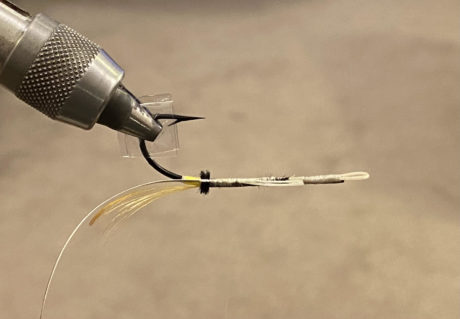
Step 11: Tie in two strands of scarlet silk about a third of the way along the shank.
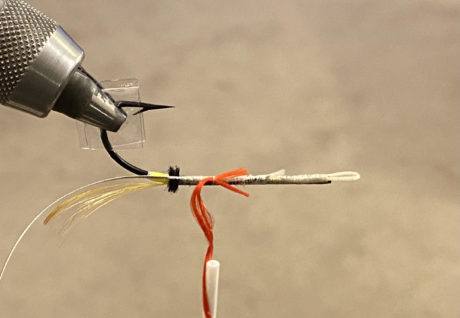
Step 12: Wrap the scarlet silk down to the butt and then back over itself to the tying in point. Once again burnish the silk to make it nice and smooth.
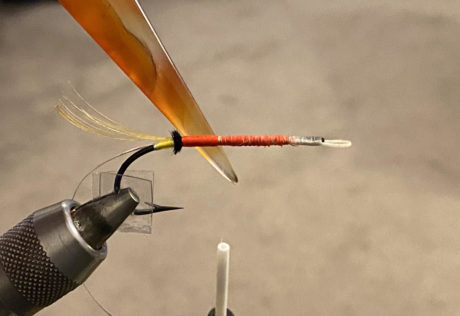
Step 13: Tie in the red cock hackle by the tip where the dubbing will begin.
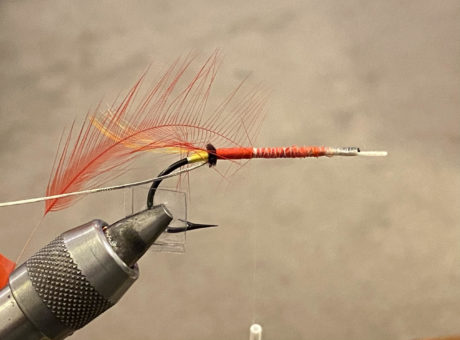
Step 14: Spin the seal fur around the thread to create a nice and smooth ‘rope’ of dubbing.
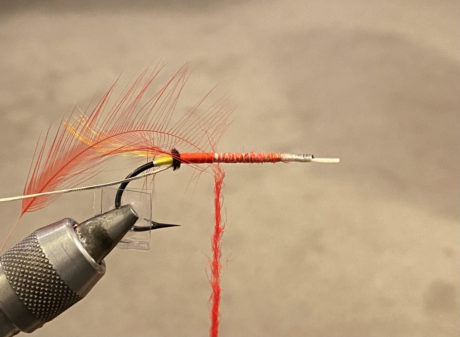
Step 15: Wrap the dubbing rope along the body to create a neat smooth body.
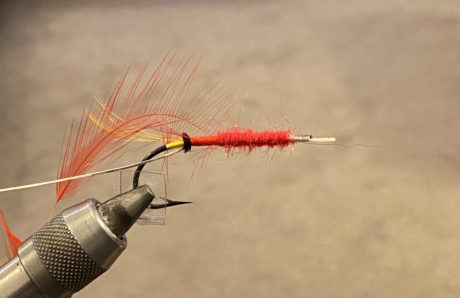
Step 16: Wrap your tinsel up along the body in neat equal wraps and tie off.
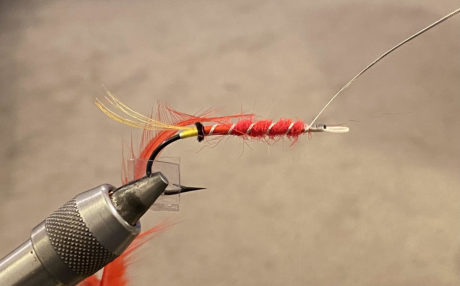
Step 17: Then follow your tinsel with the cock hackle. Classic flies were tied with the hackle behind the tinsel in this manner as antique tinsel was made with metal so it would protect the feather stalk from fish teeth.
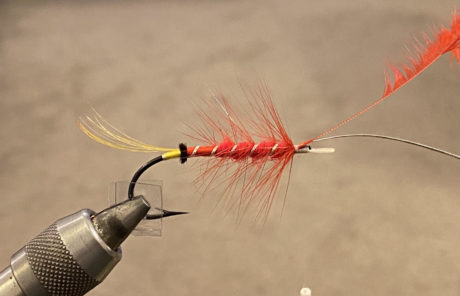
Step 18: Tie off the hackle and tinsel and pull your hackle fibres downwards along with the dubbing. Notice how this has created a nice taper to the fly body.
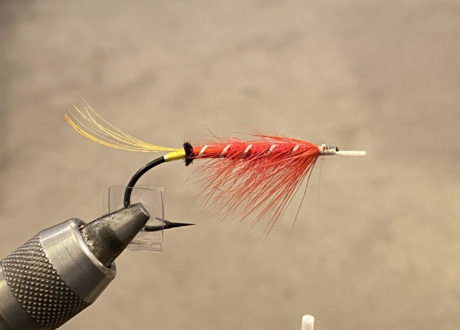
Step 19: Tie in a yellow cock hackle by the tip.
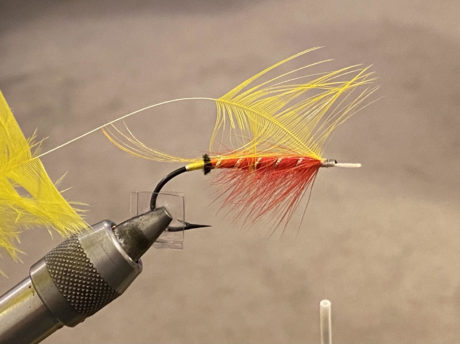
Step 20: And wrap a few times to create a head hackle and tie off. Once again try and pull most of the fibres downwards to give us room to tie in the wing.

Click Here For Part 1 of this series. Join us next week to see how we make the wing and finish the fly.
Other Flies to Tie:
Leave a Reply